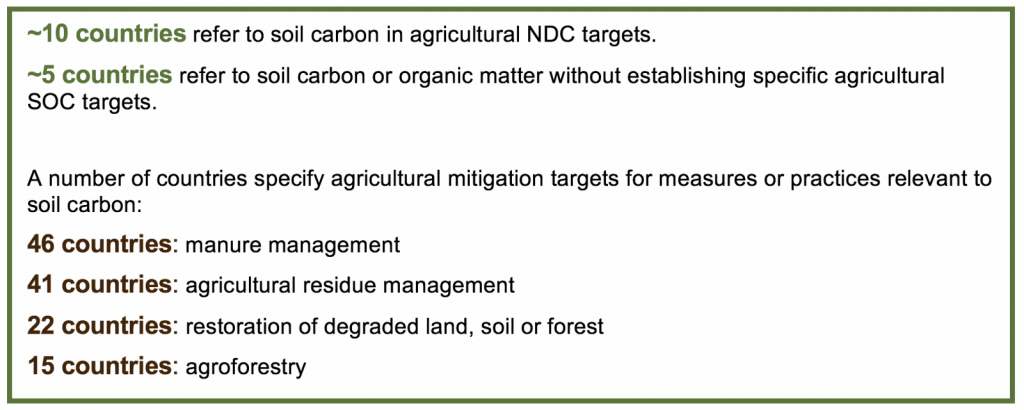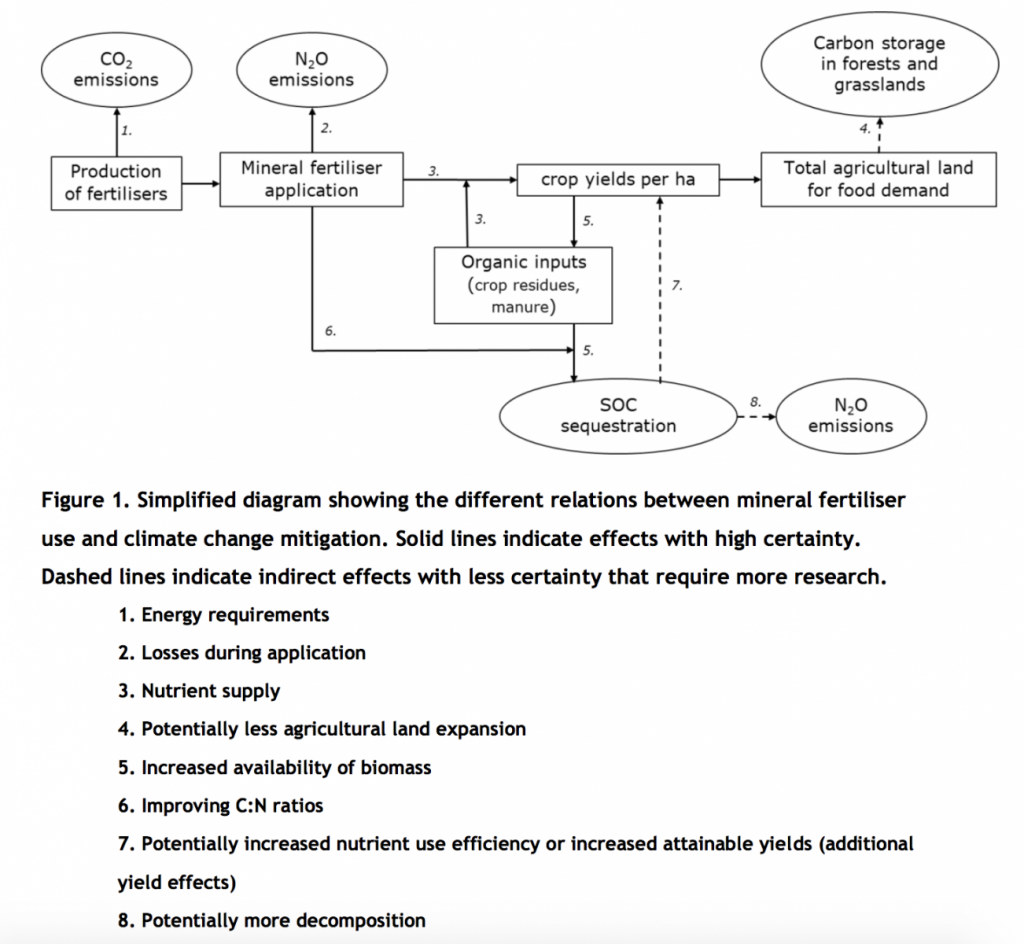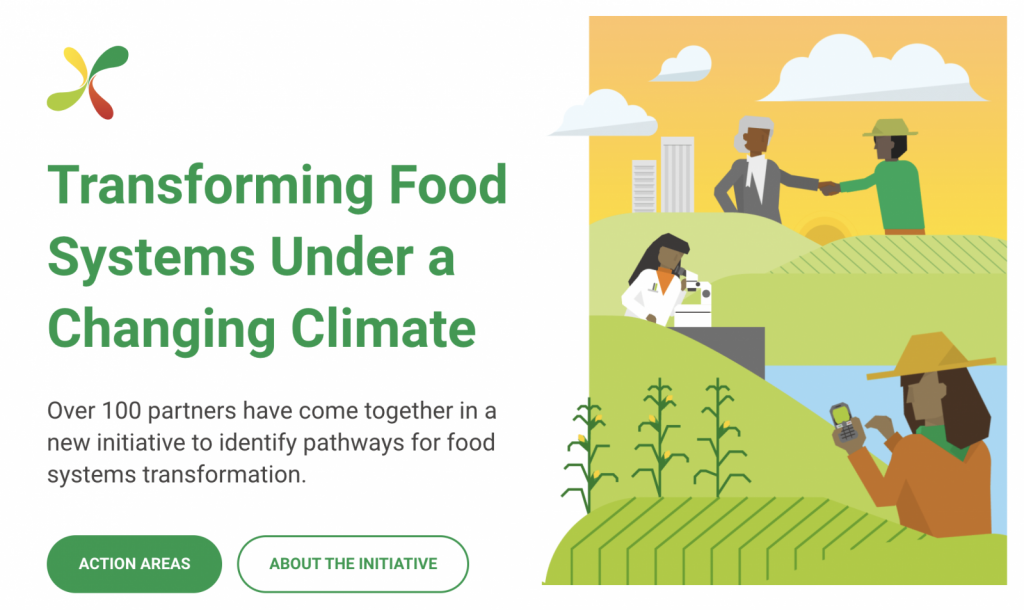Immediate action needed to improve soil carbon sequestration: key messages for decision-makers

Recent research published ahead of the UN New York Climate Summit helps guide discussions on managing soil carbon.
As part of Nature's Climate Hub during Climate Week NYC 2019, CCAFS is hosting a workshop on nature-based solutions to ensure that there is zero agricultural land expansion in high carbon landscapes and to improve carbon sequestration in degraded soils.
Soil organic carbon (SOC) protection and sequestration in agriculture could contribute to the greenhouse gas (GHG) mitigation needed to achieve the 2050 global policy targets. According to some estimates, 18 to 38 billion tons of carbon could be stored in croplands globally over the next 20 years by implementing best practices for soil organic carbon sequestration.
However, it is difficult to be confident about these numbers until we have more evidence of what is possible. This research highlight summarizes several key publications that scientists affiliated with the CGIAR Research Program on Climate Change, Agriculture and Food Security (CCAFS) and partners have recently co-authored. The findings put forward by these publications could help decision-makers better manage policy ambition, emission trade-offs, measurement, reporting and verification (MRV) options, and achieve large scale impacts for soil carbon sequestration.
Soil organic carbon in the Nationally Determined Contributions
Current Nationally Determined Contributions (NDCs) indicate that more than 40 countries have committed to practices relevant to SOC protection or sequestration, but have not specified SOC targets. Only ten countries currently refer explicitly to SOC in their agricultural NDC targets. This Info Note suggests that without explicit commitments to SOC targets, estimates of NDC contributions to mitigation will be difficult to assess.

Soil carbon and related practices under agriculture in the NDCs. (Wiese et al. 2019)
In addition, the countries with the most potential to protect or store more SOC are not necessarily the ones that have made commitments. There is thus a gap between ambition and potential for SOC targets. If more countries are to set SOC targets, practical and cost-effective monitoring systems will be needed to better quantify and report on SOC.
| Read the Info Note: Enhancing Nationally Determined Contribution (NDC) ambition for soil organic carbon protection and sequestration |
A key recommendation of this Info Note is that quantifying SOC-related NDC targets should be discussed as an opportunity for countries to leverage support for relevant national policies and technical capacity development, leverage access to climate finance, and increase transparency for global SOC accounting.
Mineral fertilizer use: a mitigation strategy
A major research and policy question is how different agricultural management practices affect soil carbon sequestration. One of our recent publications focuses on the impact of mineral fertilizer use on soil carbon sequestration, including synergies with the use of organic inputs (for example crop residues, animal manure) and trade-offs with GHG emissions.
Mineral or organic fertilizers can increase soil carbon stocks by:
- Increasing crop yields, which can lead to an increase in the availability of organic residues that can be returned to the soil either directly, after composting, or after feeding to animals, as animal manure.
- Improving the carbon-to-nitrogen ratio (C:N ratio) when crop residues are incorporated into the soil, thereby increasing the rate at which soil organic carbon forms.
The increase in soil organic carbon can also offset some of the emissions from mineral nitrogen fertilizer to help mitigate climate change. However, the effect of nitrogen fertilizer use requires attention to potential trade-offs and the scale of assessment. At the field level, net emissions from nitrogen fertilizer can be higher than the level of carbon sequestered, according to several reviews. Also, once an equilibrium is reached for soil carbon, nitrogen fertilizer emissions will continue, yielding net emissions annually. Best management practices for nitrogen use efficiency can help to minimize emissions. At global scales, increased productivity due to fertilizer use can help avoid expansion of agricultural land, for example in high carbon landscapes.

| Read the Info Note: Fertiliser use and soil carbon sequestration |
Climate change mitigation policies focusing on fertiliser use and soil carbon sequestration should distinguish between regions with low yields and low fertiliser use, where net emissions are likely to increase if agricultural productivity is to increase, and regions with high mineral fertiliser use, where increasing the efficiency of fertilizer use is a priority. Generally, a combination of both mineral fertiliser and organic fertiliser is most promising for increasing crop yields, increasing nutrient use efficiency and soil carbon sequestration.
Measuring, reporting and verifying soil carbon change
Since soil organic carbon content of soils cannot be easily measured, a key barrier to implementing programmes to increase soil organic carbon at large scale, is the need for credible, low-cost and reliable measurement/monitoring, reporting and verification (MRV) platforms, both for national reporting and for emissions trading. Without such platforms, investments could be considered risky.
| Read the full article: How to measure, report and verify soil carbon change to realise the potential of soil carbon sequestration for atmospheric greenhouse gas removal |
This paper led by Pete Smith at the University of Aberdeen reviews methods and challenges of measuring SOC change directly in soils, as well as examines some recent novel developments that show promise for quantifying SOC. The authors lay out a new vision for a global framework for MRV of soil organic carbon change to support national and international initiatives.
Achieving large-scale action to improve soil health
CCAFS is soon launching its transformation action plan covering a variety of challenges to be addressed in our agricultural and food systems, including maintaining soil health in croplands for regenerative agriculture. We propose that to reach transformational scales, national government, the private sector and international development partners will need to commit to mainstreaming practices for improved soil health and soil organic carbon in croplands as a key element of sustainable farming and to fostering the necessary enabling environment and policy, including through giving these actions prominence in NDCs.
For more information, visit the Transformation Initiative website.
Read more:
- Info Note: Enhancing Nationally Determined Contribution (NDC) ambition for soil organic carbon protection and sequestration
- Info Note: Fertiliser use and soil carbon sequestration: Key messages for climate change mitigation strategies
- Journal article: How to measure, report and verify soil carbon change to realise the potential of soil carbon sequestration for atmospheric greenhouse gas removal
- Blog: Soil organic carbon: a call to action on World Soil Day
- Report: SBSTA 50 submission by the CGIAR System Organization, International Center for Tropical Agriculture, World Bank
- Journal article: The 4p1000 initiative: Opportunities, limitations and challenges for implementing soil organic carbon sequestration as a sustainable development strategy
- Journal article: Matching policy and science: Rationale for the ‘4 per 1000 - soils for food security and climate’ initiative
Lini Wollenberg is the CCAFS Low Emissions Development Flagship Leader. Lili Szilagyi is the Communications Consultant for the CCAFS Flagship on Low Emissions Development.





